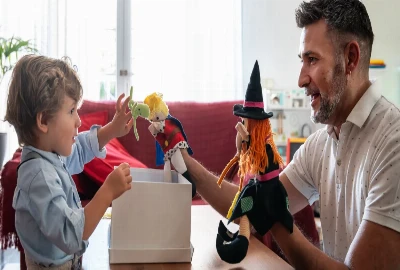Short-Form Episodic Mini-Series: Telling Bigger Stories in Smaller Bites

Entertainment has always evolved with audience behavior. From radio dramas to television serials and now to streaming platforms, storytelling adapts to how people consume media. In recent years, one of the most interesting innovations has been the short-form episodic mini-series—stories told in quick, digestible chapters designed for mobile viewing and busy lifestyles.
These bite-sized shows, often ranging from 5 to 15 minutes per episode, offer the intensity of long-form drama while fitting seamlessly into daily routines. Platforms like Quibi (though short-lived), TikTok, YouTube Originals, and even Netflix have experimented with the format. What’s becoming clear is that audiences love engaging with stories in shorter bursts, and creators are learning how to tell big, impactful narratives through small chapters.
This blog will explore how short-form episodic mini-series are redefining storytelling, why they matter to modern viewers, and what opportunities they create for creators and entertainment companies alike.
The Appeal of Short-Form Episodic Mini-Series

Designed for Modern Attention Spans
Audiences today juggle endless digital distractions, making traditional 45-minute or hour-long episodes harder to commit to. Short-form episodic mini-series cater to shorter attention spans, providing complete story beats in under 15 minutes. This doesn’t mean the stories lack depth—rather, they’re optimized for efficiency.
Accessibility and Convenience
Short-form episodes are perfect for “in-between” moments: commuting, waiting in line, or winding down at night. Unlike feature-length films, these series don’t demand large time blocks. This accessibility is one reason they resonate strongly with Gen Z and millennial viewers who value flexibility.
Engaging but Addictive
What makes this format particularly powerful is its bingeability. Even though episodes are short, viewers often watch several in one sitting, creating the same engagement effect as traditional shows. Short-form episodic mini-series prove that brevity can still drive emotional investment.
Storytelling in Smaller Bites

Crafting Concise Narratives
Creating compelling arcs within short episodes requires precision. Writers must deliver character development, tension, and resolution faster than in traditional TV. This sharpens storytelling, forcing creators to cut the fluff and focus on essentials.
Episodic Cliffhangers
Many mini-series thrive on cliffhanger endings. By delivering intense story moments in under 10 minutes, creators hook audiences into watching “just one more,” replicating the addictive nature of both TV and social media scrolling.
Experimentation in Style
Because the format is still relatively new, creators experiment with pacing, visual styles, and storytelling structures. From anthology mini-series with independent stories per episode to serialized narratives broken into snackable chunks, short-form is becoming a creative playground.
Platforms Fueling the Growth of Mini-Series

Streaming Services Entering the Space
While Quibi’s failure highlighted the challenges of short-form, other streaming giants learned valuable lessons. Netflix has tested mini-episodes for comedy and animated shows, while Amazon and Hulu are exploring similar ventures. The key difference is distribution on platforms audiences already use.
Social Media Integration
TikTok and YouTube are perhaps the biggest incubators of short-form episodic storytelling. Creators use serialized content strategies to keep audiences returning daily. These platforms blur the line between user-generated content and professional production, democratizing the format.
Mobile-First Experiences
Short-form episodic mini-series are designed with smartphones in mind. Vertical video formats, push notifications, and interactive features make mobile platforms the perfect stage for this new type of storytelling.
Why Audiences Connect With Short-Form Stories

Relatability Over Spectacle
Unlike Hollywood blockbusters, mini-series often focus on everyday stories, relatable characters, and slice-of-life narratives. This relatability appeals to younger audiences who crave authenticity and diversity in representation.
Global Reach Through Bite-Sized Culture
Shorter episodes transcend cultural and language barriers more easily. With fewer dialogues and tighter stories, they are easier to subtitle, dub, and adapt for international audiences. This gives mini-series a global storytelling advantage.
Interactive Viewing Patterns
Because of their brevity, short-form shows invite interactive engagement. Audiences discuss plot twists in real time on Twitter or share clips on TikTok. The social virality of these stories keeps them alive beyond the episode itself.
Opportunities & Challenges for Creators

Opportunities for Independent Voices
Short-form episodic mini-series lower the barrier for entry. Independent filmmakers, YouTubers, and TikTok storytellers can build professional-level series with smaller budgets. Studios and networks are increasingly scouting talent from these spaces.
Creative Constraints as Strengths
The challenge of short runtime forces creators to be more inventive. With limited space, stories must be tight, emotional, and instantly engaging. This often results in more innovative storytelling than longer, bloated formats.
Monetization and Sustainability
The business model is still evolving. Ads, sponsorships, and partnerships play key roles, but studios are also experimenting with pay-per-episode or bundled subscription offerings. Balancing profitability while maintaining audience accessibility remains a challenge.




